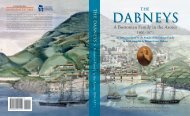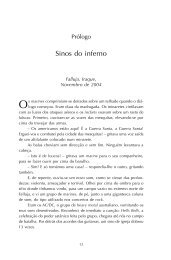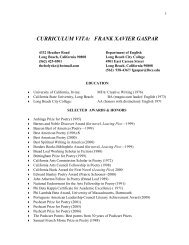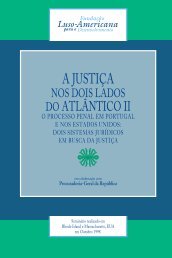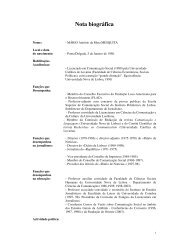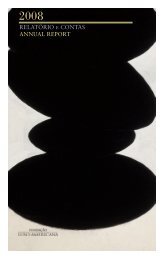68 cuLTure ‘ As Jefferson […] and John Adams […] found out on a visit to several of London’s most famous gardens in the late 18 th century, ironically, “the english garden is, in fact, American. ’ of all.” 5 In this case, it was owing to a general lack of initiative that the black locust, which is today considered an invasive species (prohibited by Decree-Law 565/99), did not spread like a plague throughout Portugal, but remained confined – as did the tulip trees and catalpas – to public and private parks, gardens, and avenues as ornamental trees. The existence of these trees in Portugal is linked to the botanical bent of the upper crust English who lived in Portugal at the time. The members of the privileged set were determined to design gardens containing species that had been discovered under the patronage of the British aristocracy. Indeed, the monied classes, along with British botanists, and even the British monarchy had been long-time investors and sponsors of countless botanical expeditions, which included the journeys of discovery carried out by two of the world’s most tireless plant-hunters: the American John Bartram, who brought the white magnolia to Europe, and Mark Catesby, British naturalist, illustrator and author of the Natural History of Carolina, Florida and the Bahama Islands (1731-1743), the first book to contain colored plates of North American flora and fauna, and the man who “discovered” the catalpa while roaming the wilds of Georgia and Alabama. So, it is no surprise that one of the regular contributors to the Journal of Practical Horticulture, with a number of essays on the trees of America, was the Englishman William C. Tait, whose garden in Porto was nothing short of a botany collection, and today is home to one of the oldest tulip trees in Portugal – 250 years old to be precise. The Monserrate Park in Sintra, formerly owned by Sir Francis Cook (1817-1901), can also boast a giant tulip tree, magnolias, and species from a number of other continents. This imposing park was designed with the help of landscape painter William Stockdale, botanist William Nevill, and James Burt, the master gardener of Kew Gardens. It is also strikes no one as odd that there are American species in Pena National Park in Sintra, where a majestic tulip tree holds court along with a sequoia, and a giant American arbor vitae. The Park’s main men- tors, Fernando II, the royal consort and his second wife, the Countess of Elda, both cultivated an interest in botany to the extent that they symbolically planted a eucalyptus in Pena Park on the day of their wedding – June 10, 1869. And they had the good fortune of having as a friend the American forestry specialist John Slade, the brotherin-law of the monarch’s young wife. As Jefferson, at the time America’s minister to France, and John Adams, US minister to the Court of St. James found out on a visit to several of London’s most famous gardens in the late 18th century, ironically, “the English garden is, in fact, American.” 6 Many of the shrubs and trees had been sent from North America as seeds by John Bartram, in what came to be known as “Bartram’s boxes,” which bore scores of American specimens to both the European mainland and England. In 1765 King George III granted the American-born botanist an annual pension of £50, to serve as “the King’s Botanist in North America,” a post he would hold until his death in 1777. From his home in Philadelphia, Bartram corresponded with Mark Catesby as he trekked through America’s colonial heartland discovering trees that no-one but the native Americans had ever laid eyes on, like the catalpa, which in Creek means “winged head,” owing to the shape of its blossoms. Catesby was known as a man of few words, which must have been a great relief to the Native Americans whose agricultural and botanical acumen he was wise enough to tap. However, several commentators have noted that Catesby also expresses discouragement in his writings. The reason is that the naturalist had come to realize that the European settlers had grown indifferent to America’s natural wonders, which even before the Catesby death in 1749, they had relentlessly begun to destroy. 1. PAKENHAM, Thomas, “Le Tour du Monde en 80 Arbres”, Éditions du Chêne, 2002, pg. 100. 2. “Shade-Trees in Cities”, Rural Essays, DOWNING, A. J., Geo. A. Leavitt, New York, 1869, pgs. 316-318 [Google Livros]. 3. “Impressões da Exposição Agrícola Portuense”, LAPA, J. L. Ferreira, Archivo Rural, 1860, vol. 3, pg. 373 [Google Livros]. 4. “As Catalpas”, KNOTT, Edmond, Jornal de Horticultura Prática, vol. X, 1879, pgs. 66, 67 and 68. Another interesting article is: “A Catalpa Bignonioides como Árvore Económica”, TAIT, William C., Jornal de Horticultura Prática, vol. XVIII, 1887, pg. 153. [online: FUNDO ANTIGO, Faculdade de Ciências Universidade do Porto]. 5. “Robinia Pseudo-Acacia,” FREITAS, M. de, Jornal de Horticultura Prática, vol. XVII, 1886, pgs. 198-200 [online: FUNDO ANTIGO, Faculdade de Ciências Universidade do Porto]. Parallel no. 6 | FALL | WINTER 2011
cuLTure The catalpa with its heart-shaped leaves and suspended fruits and flowers, adorning a street in Lisbon, 2009. 6. “The Founding Fathers and Their Gardens,” DEITZ, Paula, Sunday Book review, NYTimes.com, May 6, 2011, in a review of the book Founding Gardeners - The revolutionary Generation, Nature, and the Shaping of the American Nation,” WULF, Andrea, Alfred A. Knopf, New York, 2011. The following are the scientific names and respective families of the three main trees discussed in this article: the tulip tree (Liriodendron Tulipifera L., Magnoliaceae), the catalpa (Catalpa Speciosa and Bignonioides, Bignoniaceae) and the black locust tree (robinia Pseudoacacia L. Fabaceae). * Since 2007, Susana Neves has written a monthly chronicle on the history of trees in Portugal for the magazine Tempo Livre, published by the <strong>Fundação</strong> Inatel. Since 2010, she has been designing a project for the Douro Museum called The Trees that Ate Paper, an ethno-botanical, photographic initiative involving the Douro region’s arboreal heritage. Neves represented Portugal at the “Kulturnatten” (Culture Night) in Copenhagen with her “Trip To the South Pollen – Photographic Work, 2007- 2009”. She has displayed over 100 photographs at solo shows in Lisbon and at the first edition of Land Art in Cascais. susanaseven@gmail.com Parallel no. 6 | FALL | WINTER 2011 69
- Page 1 and 2:
Why Studying at a Portuguese Univer
- Page 3 and 4:
contents OFERTA DO EDITOR 04 | Edit
- Page 5 and 6:
A trail of war and debt “The ten
- Page 7 and 8:
Three iconic sites “On the 10th a
- Page 9 and 10:
[Brent Glass] Remembering is a very
- Page 11 and 12:
‘ i don’t know if you can ever
- Page 13 and 14:
15 22 9 13 10 16 19 3 26 poLicy A R
- Page 15 and 16:
RUI OChÔA Teixeira, professor of p
- Page 17 and 18: RUI OChÔA ference series on the Se
- Page 19 and 20: RUI OChÔA ‘ the possibility of a
- Page 21 and 22: RUI OChÔA concept of terrorism bri
- Page 23 and 24: RUI OChÔA ‘ The political demise
- Page 25 and 26: peoples. Moreover, Islam is compati
- Page 27 and 28: RUI OChÔA A sHAred civiLiZATionAL
- Page 29 and 30: “Today we are marking the 10 th a
- Page 31 and 32: Yet many years would pass before a
- Page 33 and 34: close to three out of five American
- Page 35 and 36: ChRIS GRAEME single state, to make
- Page 37 and 38: poLicy The period of 1989 to today
- Page 39 and 40: France. The period of the constitut
- Page 41 and 42: a document disclosure policy that g
- Page 43 and 44: [TMS] As a player, Portugal was rel
- Page 45 and 46: these resources have placed many of
- Page 47 and 48: By rui BoAvisTA mArques* ‘ The bi
- Page 49 and 50: By AnTónio rendAs* A groundbreakin
- Page 51 and 52: They publish materials, but they do
- Page 53 and 54: As far as entrepreneurship is conce
- Page 55 and 56: the first of its kind in the countr
- Page 57 and 58: counselor, he retired from the dipl
- Page 59 and 60: cAusTic Humor And Kind GesTures But
- Page 61 and 62: een allowed to bring their own clot
- Page 63 and 64: as in the past, female criminality
- Page 65 and 66: ‘ catalpa-planting fever first hi
- Page 67: cuLTure Blossoms of the black locus
- Page 71 and 72: ‘ one thing is to learn about you
- Page 73 and 74: cuLTure The Bagatelle: a possible p
- Page 75 and 76: was,” he admits. Prior to his sta
- Page 77 and 78: The simple, spartan dinner table, w
- Page 79 and 80: cuLTure Writers sylvia plath and th
- Page 81 and 82: elentless - yet funny - barbs, and
- Page 83 and 84: Cem Poemas emily dickinson (A Hundr
- Page 85 and 86: california presentation of Landmark
- Page 87 and 88: FLAd ArT coLLecTion “Don’t move







